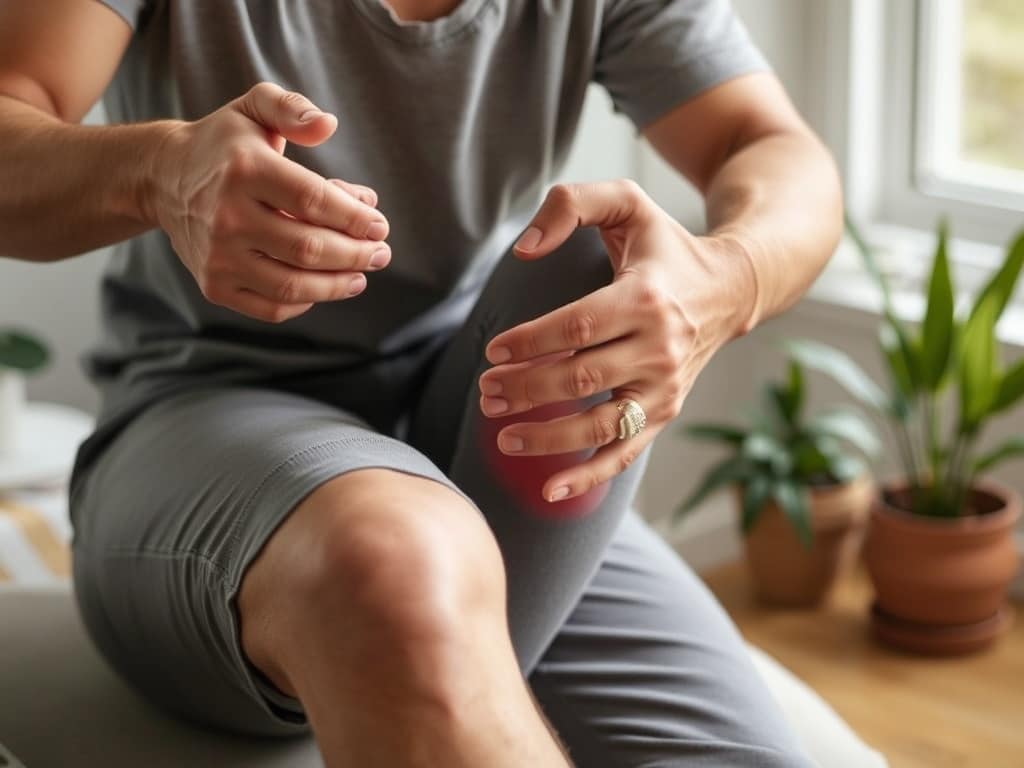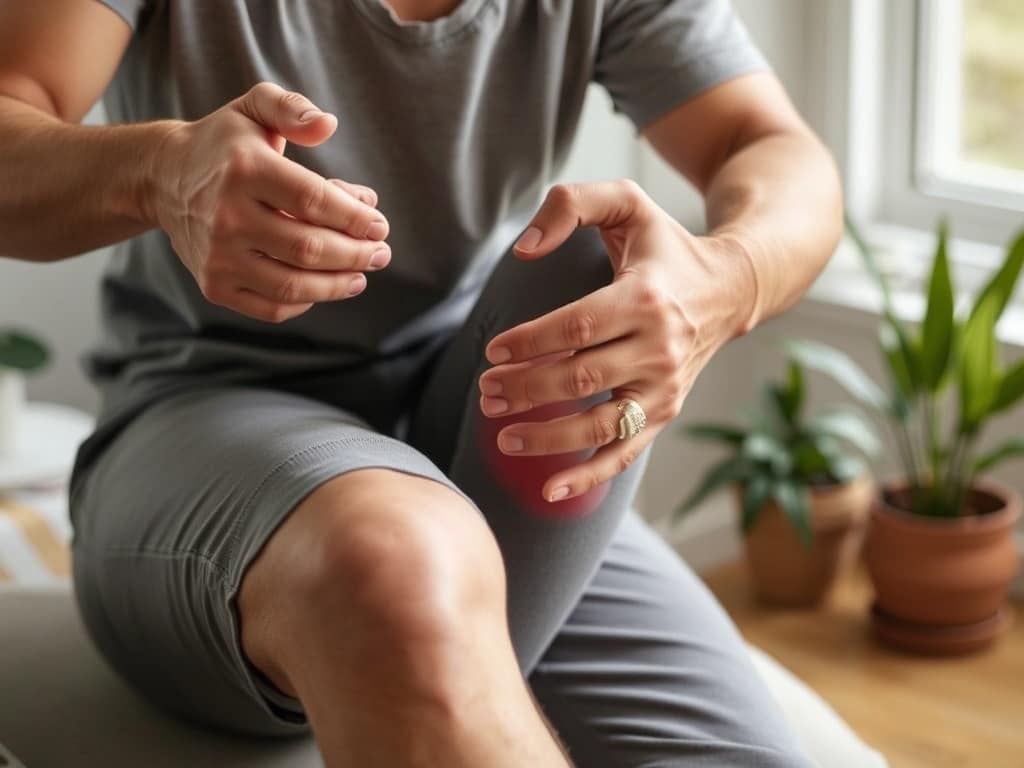Unlock Your Mobility: Natural Joint Stiffness Remedies for Ageless Living
Do you wake up in the morning feeling like your joints are rusty hinges? Does a simple walk leave you aching and immobile? Joint stiffness, that unwelcome companion of aging, doesn’t have to dictate your life. Imagine, instead, a life of fluid motion, where you can garden, dance, or simply play with your grandchildren without wincing. This seemingly impossible dream is within reach. Let’s explore natural joint stiffness remedies that foster ageless living.
What is Joint Stiffness and What are its Common Causes?
Joint stiffness refers to the sensation of restricted movement in one or more of your joints. It’s not just about discomfort; it’s about a limitation that impacts your daily life. The causes are varied, but understanding them is the first step towards relief.
Common Culprits Behind Stiff Joints:
- Osteoarthritis: The most prevalent cause, osteoarthritis involves the breakdown of cartilage, the cushioning tissue in your joints. This leads to friction, pain, and stiffness.
- Rheumatoid Arthritis: An autoimmune disease where your body attacks the lining of your joints, causing inflammation, swelling, and stiffness.
- Gout: This painful condition arises from a buildup of uric acid crystals in the joints, most often affecting the big toe, but can also affect other joints.
- Bursitis and Tendinitis: Inflammation of the bursae (fluid-filled sacs that cushion joints) and tendons (cords that attach muscle to bone) respectively can lead to stiffness and pain.
- Injury and Trauma: Sprains, dislocations, and fractures can all cause temporary or long-term joint stiffness.
- Inactivity: Prolonged periods of sitting or inactivity can lead to muscle shortening and joint stiffness.
What are the Symptoms of Stiff Joints I Should Look Out For?
Recognizing the symptoms early can prevent potential problems. Joint stiffness doesn’t always manifest as excruciating pain; it can start subtly and increase over time.
Key Indicators of Joint Problems:
- Morning Stiffness: Stiffness that lasts for more than 30 minutes upon waking is a common indicator of inflammatory arthritis.
- Reduced Range of Motion: Difficulty bending, straightening, or rotating a joint.
- Swelling and Redness: Visible inflammation around the affected joint.
- Pain that Worsens with Activity: Discomfort that increases when you use the joint and improves with rest.
- Grinding or Clicking Sensations: Hearing or feeling unusual noises when you move the joint.
Specific Foods to Reduce Joint Inflammation and Stiffness
Your diet plays a monumental role in managing inflammation and joint health. Embracing anti-inflammatory foods can significantly ease stiffness and pain.
Power Foods for Joint Health:
- Fatty Fish: Salmon, mackerel, and sardines are rich in omega-3 fatty acids, potent anti-inflammatory agents. Aim for at least two servings per week.
- Olive Oil: Extra virgin olive oil contains oleocanthal, a compound with similar anti-inflammatory effects to ibuprofen.
- Colorful Fruits and Vegetables: Berries, cherries, spinach, kale, and broccoli are packed with antioxidants that combat inflammation.
- Nuts and Seeds: Almonds, walnuts, flaxseeds, and chia seeds are excellent sources of omega-3 fatty acids and other nutrients that support joint health.
- Whole Grains: Opt for whole grains like quinoa, brown rice, and oats over refined grains to help manage inflammation.
Effective Exercises and Physical Therapies for Improving Joint Mobility
Movement is medicine. Targeted exercises and physical therapies can not only alleviate stiffness but also strengthen the muscles surrounding your joints, providing better support and stability.
Movement Strategies for Supple Joints:
- Low-Impact Aerobics: Walking, swimming, cycling, and water aerobics are gentle on the joints while improving cardiovascular health.
- Strength Training: Strengthening the muscles around your joints provides support and reduces stress. Focus on exercises that target major muscle groups.
- Range-of-Motion Exercises: Simple exercises like arm circles, ankle rotations, and knee bends can help maintain joint flexibility.
- Physical Therapy: A physical therapist can create a personalized exercise program tailored to your specific needs and limitations.
- Yoga and Tai Chi: These practices combine gentle movements, stretching, and mindfulness, which can improve flexibility, balance, and reduce stress.
Herbal Remedies and Supplements for Joint Stiffness
Nature offers a wealth of remedies for joint stiffness. Certain herbs and supplements possess powerful anti-inflammatory and pain-relieving properties.
Nature’s Arsenal for Joint Relief:
- Turmeric: Contains curcumin, a potent anti-inflammatory compound. Consider taking a curcumin supplement with piperine (black pepper extract) for better absorption.
- Ginger: Has anti-inflammatory and analgesic properties. Can be consumed fresh, as a spice, or in supplement form.
- Boswellia: Also known as Indian frankincense, boswellia extract has been shown to reduce pain and improve joint function.
- Glucosamine and Chondroitin: These supplements are building blocks of cartilage and may help protect against cartilage breakdown.
- SAMe (S-adenosylmethionine): A naturally occurring compound in the body that has been shown to reduce pain and inflammation.

Creating a Daily Routine that Supports Flexible and Healthy Joints
Consistency is key. Establishing a daily routine that prioritizes joint health can make a significant difference in your overall mobility and comfort.
A Day in the Life of Healthy Joints:
- Start with Gentle Stretching: Begin your day with a series of gentle stretches to warm up your joints and improve circulation.
- Stay Hydrated: Water helps lubricate your joints and keep them functioning smoothly. Aim for at least eight glasses of water per day.
- Incorporate Movement Breaks: If you sit for extended periods, take regular breaks to stand up, stretch, and walk around.
- Practice Good Posture: Proper posture reduces stress on your joints and helps prevent pain.
- End the Day with Relaxation: Stress can exacerbate joint pain. Engage in relaxing activities like meditation, yoga, or a warm bath before bed.
Lifestyle Changes to Alleviate Joint Stiffness
Certain lifestyle adjustments can drastically reduce the burden on your joints. Weight management and posture correction are particularly important.
Small Changes, Big Impact:
- Weight Management: Excess weight puts extra stress on weight-bearing joints like your knees and hips. Losing even a small amount of weight can significantly reduce joint pain and stiffness.
- Posture Correction: Poor posture can strain your joints and contribute to pain. Be mindful of your posture when sitting, standing, and walking.
- Proper Lifting Techniques: When lifting heavy objects, use your legs and keep your back straight to avoid straining your joints.
- Ergonomic Adjustments: Ensure your workspace is ergonomically designed to minimize stress on your joints.
When to Seek Professional Medical Advice for Joint Stiffness
While many joint stiffness remedies can be implemented at home, it’s essential to know when to seek professional medical advice. Don’t hesitate to consult your doctor if:
Warning Signs to Watch Out For:
- Sudden and Severe Joint Pain: If you experience sudden, intense pain in one or more joints, seek immediate medical attention.
- Persistent Stiffness That Doesn’t Improve: If your stiffness persists for more than a few weeks despite home remedies.
- Swelling, Redness, or Warmth in the Joint: These are signs of inflammation and potential infection.
- Fever or Other Systemic Symptoms: If you experience fever, fatigue, or other systemic symptoms along with joint stiffness.
- Difficulty Performing Daily Activities: If your stiffness is significantly impacting your ability to perform everyday tasks.
Assistive Devices to Aid in Daily Activities
When joint stiffness limits your capabilities, assistive devices can be invaluable in maintaining your independence and quality of life.
Tools for Easier Living:
- Canes and Walkers: These devices provide support and stability, reducing stress on weight-bearing joints.
- Jar Openers and Reachers: These tools can help you perform tasks that require gripping or reaching.
- Adaptive Utensils: Utensils with large, comfortable handles can make eating easier.
- Raised Toilet Seats: These can make sitting and standing easier and safer.
- Grab Bars: Installing grab bars in your bathroom can provide extra support and prevent falls.
Gentle Stretches to Maintain Joint Flexibility
Regular stretching is crucial for maintaining joint flexibility and range of motion. These gentle stretches can be incorporated into your daily routine.
Easy Stretches for Supple Joints:
- Neck Stretches: Gently tilt your head from side to side and forward and backward, holding each stretch for 15-30 seconds.
- Shoulder Rolls: Rotate your shoulders forward and backward in a circular motion.
- Arm Circles: Extend your arms to the sides and make small circles, gradually increasing the size of the circles.
- Wrist Stretches: Gently bend your wrist forward and backward, holding each stretch for 15-30 seconds.
- Ankle Rotations: Rotate your ankles clockwise and counterclockwise.
- Knee Bends: Gently bend and straighten your knees, being careful not to overextend.
Joint stiffness doesn’t have to be a life sentence. By implementing these natural remedies, lifestyle changes, and exercises, you can unlock your mobility and enjoy an active, fulfilling life at any age. Remember to listen to your body, consult with your doctor when needed, and celebrate every small victory along the way. Your journey to ageless living starts now!

